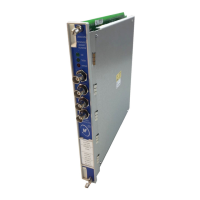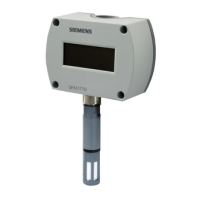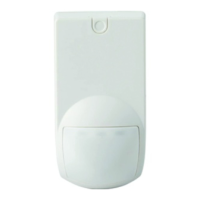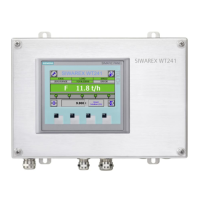Installation checks and
functional tests
Removal from cell in outdoor non-walk-
in enclosures or for indoor switchgear
installed on a raised pad
Removal of the circuit breaker from a non-
walk-in outdoor-switchgear assembly is
similar to removal of a circuit breaker at
floor level with several additional steps.
Figure 3 shows the two extension rails
inserted into the fixed rails within the cell.
The rails engage locking pins in the fixed
rails to secure them in position. The
procedure for removal of a circuit breaker
not located at floor level is:
1. Close the circuit-breaker compartment
door and secure all latches.
2. Insert the racking crank onto the
racking screw on the front of the
circuit-breaker cell, and push in (refer
to "Racking crank engagement
procedure" on page 11). This action
operates the racking-interlock latch.
3. Rotate the racking crank
counterclockwise until the circuit
breaker is in the DISCONNECT position.
4. Open the circuit-breaker compartment
door and insert the two extension rails
into the fixed rails. Be sure the
extension rails are properly secured in
place.
Heavy weight.
Can result in death, serious injury or property damage.
Observe all handling instructions in this instruction manual to
prevent tipping or dropping of equipment.
Removal from cell in indoor switchgear
if not on raised pad and Shelter-Clad
outdoor switchgear
After performing the spring discharge
check (with control power de-energized),
remove the circuit breaker from its
switchgear cubicle.
1. Insert the racking crank on the racking
screw on the front of the circuit
breaker cell, and push in (refer to
"Racking crank engagement procedure"
on page 11). This action operates the
racking-interlock latch. Figure 2 shows
circuit breaker racking.
2. Rotate the racking crank
counterclockwise until the circuit
breaker is in the DISCONNECT position,
as indicated on the racking
mechanism.
3. Move the circuit breaker release latch
(on the floor of the cell near the right
side of the circuit breaker) to the left
and pull the circuit breaker out from
the DISCONNECT position. The circuit
breaker can now be removed from the
cubicle.
4. The circuit breaker is now free to be
rolled out onto the floor using the
handles on the front. The wheels of the
circuit breaker are at floor level (unless
the switchgear is installed on a raised
pad), and one person can normally
handle the unit.
10
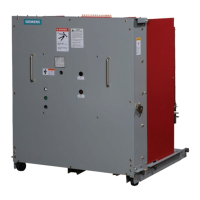
